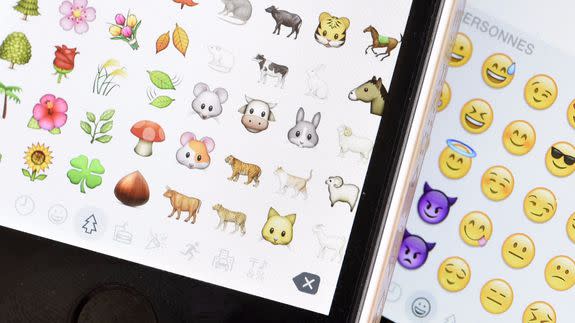Pitching for a new emoji? This is how you submit a proposal to Unicode

Emojis are a ubiquitous way to communicate in this day and age, but you've probably wondered — how do emojis make their way to your phone's keyboard?
Recently there has been a push for Australian Aboriginal and Torres Strait Islander flags to be included as emoji (yes please!) as well as petitions for redhead emoji, dumpling emoji and brands trying to crash the party.
SEE ALSO: Emoji habits laid bare in new real-time graph that charts top 50
While a petition is nice step towards raising awareness, the ultimate decision on what is accepted as a new emoji rests with the Unicode Consortium.
It's a not-for-profit organisation that standardises letters and characters on computers, a system which is called Unicode. Fundamentally, Unicode ensures that other computers can see each other's characters, ensuring consistency and avoiding those pesky white boxes you see instead of text.
Unicode is responsible for bringing out new emoji with every version it releases. Unicode 8.0 added the unicorn and thinking face, while Unicode 9.0 featured the addition of bacon and an avocado emoji.
It's still up to manufacturers and software makers as to when they adopt new Unicode versions, but they usually tucking the updates ASAP. If you want to know more, here's explanation on the history of emoji and Unicode.
How do I submit an emoji for inclusion?
Got a lot of spare time? You might need it. The process for submitting an emoji for inclusion is laborious. But not without reward. In order to be considered, you'll need to address a number of detailed selection factors as outlined by the consortium.
Two of the most important selection factors, according to Unicode, are an emoji's compatibility and expected usage level.
Compatibility refers to whether Unicode needs a certain emoji because it's already popular on other existing platforms, such as Snapchat, Twitter, or QQ.
Expected usage level includes how frequently the emoji will be used, which will require evidence to back up the claim. You'll also need to prove whether the emoji has a possibility for multiple usages, which also requires an explanation for the metaphorical use and symbolism of the potential emoji.
For example: "The 🐱 CAT FACE, 🐷 PIG FACE, or 🐰 RABBIT FACE may be used to evoke positive feelings, while🕷 SPIDER may used to evoke negative feelings," according to the Unicode Consortium.
There are other selection factors which can aid your application: Image distinctiveness, completeness and whether the emoji has been frequently requested, like in the case of the Aboriginal and Torres Strait Islander flags.
Image distinctiveness refers to how unique an emoji is compared to the current ones available. "Completeness" means whether certain emoji is needed to complete a set. In Unicode 8.0, five emoji were added to complete the zodiac, for example.
According to the Unicode Consortium, the effect of petitions on selecting emoji is "misrepresented." So while a petition looks good, it has little effect in terms of getting your emoji selected.
What will get turned away as emoji?
The Unicode Consortium has no time for overly specific emoji, amongst other things. For example, you can already get french fries as an emoji, so any pitches for potato chips, potato wedges, hash browns, rosti etc. will likely get rejected on the basis that it's overly specific.
You can't have what it calls "open-ended" emoji either, referring to icons that are just one of many with no particular reason to "favour it over others of that type." So no pink tennis balls, if there's already a green one.
Logos, brands, UI icons, signage, specific people and deities will never make it; despite your yearning for Pikachu emoji. Emoji that's considered "transient" a.k.a. a fad will be excluded.
How long will it take to approve?
About a year-and-half from submission to implementation, according to the Unicode Consortium's sample timeline.
Proposals need to be in by Oct. 1 for it to be considered in the next release, which is discussed in the following year. Your submission will initially make its way through the emoji sub-committee, who decide whether if it should be forwarded to the Unicode Technical Committee (UTC) who have the final say.
The UTC discusses the proposal over a number of meetings, then they reach a consensus to what emoji proposals are declined, or returned for additional work. If the proposal is accepted, it'll become an emoji candidate. Yay! At the end of the year, the UTC decides what candidates will become an emoji in the next release.
And there you have it, the brutal (but not impossible!) world of trying to get a new emoji included on your phone.
Ready to submit a proposal? Head this way.

 Yahoo News
Yahoo News 